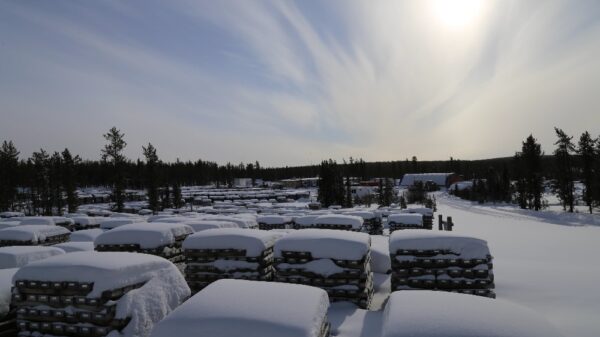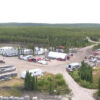The United Kingdom published its Civil Nuclear: Roadmap to 2050 document on Thursday, detailing how the country will increase its nuclear capacity from 6 gigawatts (GW) to 24 GW in the coming decades.
The roadmap discusses strategies for attracting more skilled workers into the industry, investments in nuclear fuel and more. The nation’s government just announced that it will invest C$510 million in high-assay low-enriched uranium (HALEU) production for advanced reactors.
The comprehensive roadmap proposes the construction of another major power plant equal in size to the Hinkley Point C project in Somerset, the world’s most expensive power station. Industry sources told the BBC that the new major plant would likely be situated at the site of the previously operational Wylfa nuclear plant on the island of Anglesey or Moorside in Cumbria.
The nation currently relies on nuclear power for about 15 per cent of its electricity. It aims to provide 25 per cent with domestic reactors by the target date 26 years from now. Those statistics may look off because three out of four of the nuclear power units currently operating in the UK will be decommissioned by 2030, leaving a void to fill.
The French state-owned company EDF (Électricité de France) proposed to keep the Sizewell B plant in operation until 2055. This represents a 20-year extension; that power station was the last to be powered up in the country in 1995. The EDF will make a final decision on the matter next year.
The UK will invest significantly in the development of small modular reactors (SMRs) and advanced modular reactors (AMRs) as well. The government organization launched last year, Great British Nuclear, says the country’s SMRs will be brought online in the mid-2030s.
“Not only does this roadmap set a clear path for the growth of nuclear fission,” Claire Coutinho, UK energy secretary, said. “It also includes the production of domestic nuclear fuel and regular investment decisions in new projects while explaining how we will develop the skills and supply chains required to support this rapidly growing industry.”
Headlines around the #uranium world: The UK 🇬🇧 is taking a leadership position by announcing it will 4𝒙 its #nuclear generation capacity and launch a high-tech HALEU fuel enrichment program. Who else will follow?
Source → https://t.co/b5stAmQNys pic.twitter.com/YD7DzL2ukM
— ATHA Energy Corp (@athaenergycorp) January 11, 2024
Read more: ATHA Energy closes C$23.5M financing, continues exploration with stronger balance sheet
Read more: ATHA Energy to acquire Latitude Uranium and 92 Energy, creating industry’s largest uranium portfolio
Government roadmap receives praise
The UK government’s new roadmap received positive feedback from several industry stakeholders.
Britain’s Nuclear Industry Association (NIA) says reducing reliance on Russia for HALEU is of the utmost importance.
“Nuclear is an integral part of the UK’s route to energy security and decarbonization with economic activity, jobs and growth across the country,” Tom Greatrex, CEO of the NIA, said. “Following this roadmap, at pace and with focus, will enable the most effective and efficient delivery of that vital capacity.”
“We also welcome the firm commitment to get rid of Russian fuel.”
The move received praise from Great British Nuclear, the Nuclear Institute, Prime Minister Rishi Sunak, the influential uranium exploration company ATHA Energy Corp. (CSE: SASK) (FRA: X5U) (OTCQB: SASKF) and others as well.
“This will ensure our future energy security and create the jobs and skills we need to level up the country and grow our economy,” Sunak said.
ATHA Energy is a sponsor of Mugglehead news coverage
rowan@mugglehead.com














